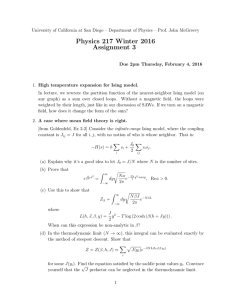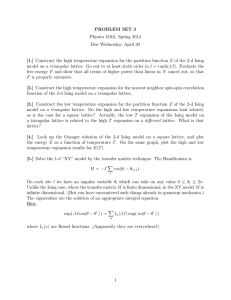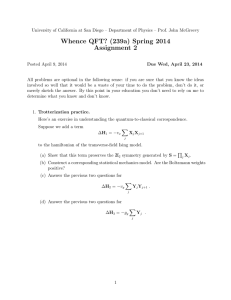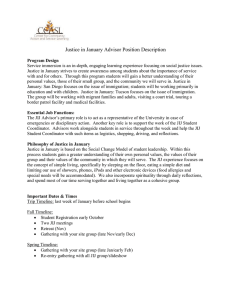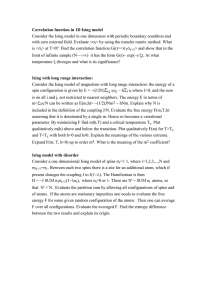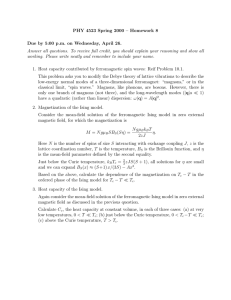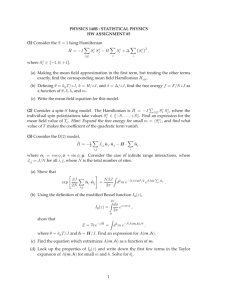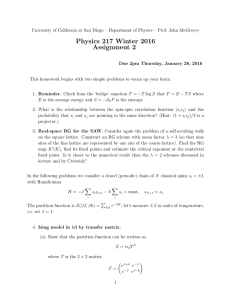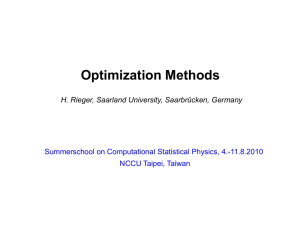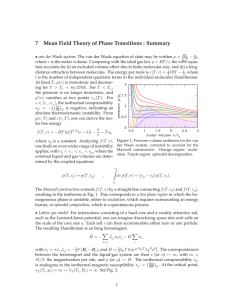Physics 217 Winter 2016 Assignment 4
advertisement
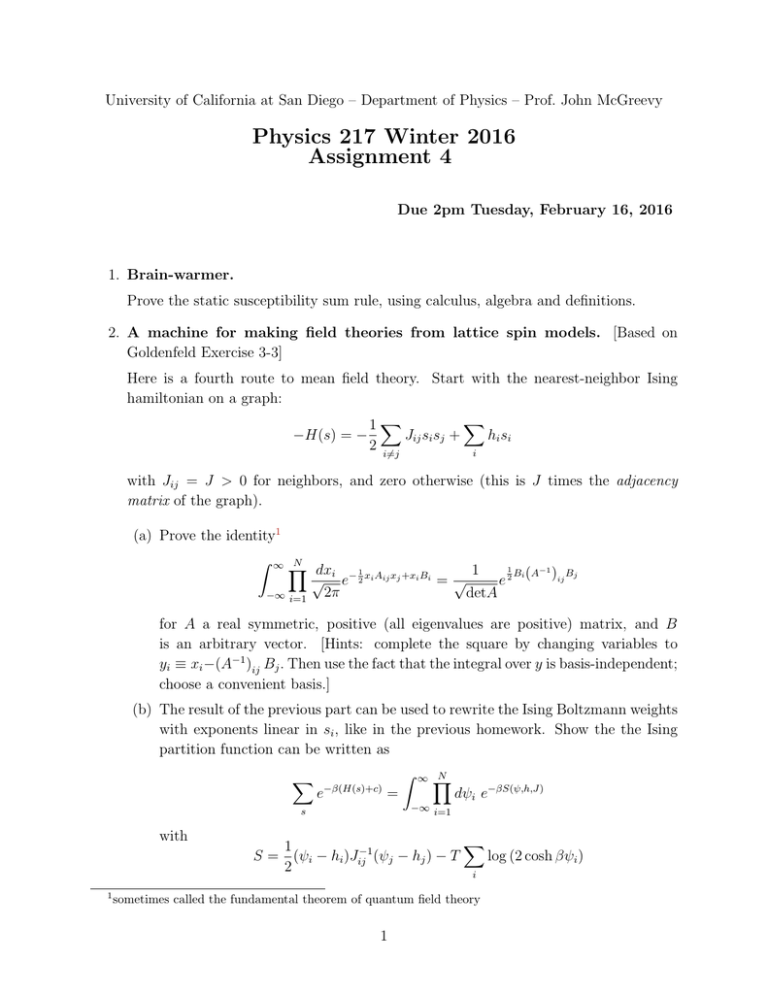
University of California at San Diego – Department of Physics – Prof. John McGreevy Physics 217 Winter 2016 Assignment 4 Due 2pm Tuesday, February 16, 2016 1. Brain-warmer. Prove the static susceptibility sum rule, using calculus, algebra and definitions. 2. A machine for making field theories from lattice spin models. [Based on Goldenfeld Exercise 3-3] Here is a fourth route to mean field theory. Start with the nearest-neighbor Ising hamiltonian on a graph: X 1X Jij si sj + hi si −H(s) = − 2 i6=j i with Jij = J > 0 for neighbors, and zero otherwise (this is J times the adjacency matrix of the graph). (a) Prove the identity1 Z N ∞ Y −∞ i=1 1 1 1 dx B A−1 B √ i e− 2 xi Aij xj +xi Bi = √ e 2 i ( )ij j 2π detA for A a real symmetric, positive (all eigenvalues are positive) matrix, and B is an arbitrary vector. [Hints: complete the square by changing variables to yi ≡ xi −(A−1 )ij Bj . Then use the fact that the integral over y is basis-independent; choose a convenient basis.] (b) The result of the previous part can be used to rewrite the Ising Boltzmann weights with exponents linear in si , like in the previous homework. Show the the Ising partition function can be written as X e −β(H(s)+c) Z = 1 dψi e−βS(ψ,h,J) −∞ i=1 s with N ∞ Y X 1 log (2 cosh βψi ) S = (ψi − hi )Jij−1 (ψj − hj ) − T 2 i sometimes called the fundamental theorem of quantum field theory 1 for some c. Find c. The RHS is a discretization of a functional integral, in that the dynamical variable ψi approximates a function ψ(x) in the limit of small lattice spacing and large lattice. (c) Evaluate the ψ integrals by saddle point: Z ' e−βS[ψ] where ψ is a configuration of the integration varaibles which minimizes S. Find the equation determining ψ and show that the magnetization mi ≡ hsi i = −∂hi F ' −∂hi S|ψ is given by mi = tanh βψ. Invert this equation to find hi (m). (d) Let S ≡ S[ψ]. The mean field free energy is FMF = S. Show that X 1X S= Jij mi mj − T log 2 ij i 2 p 1 − m2i ! . Plugging in the mean field solution will give a function of h. Legendre transform to the fixed-m ensemble: X Γ[m] = S + hi (m)mi i and show that the condition hi = ∂mi Γ reproduces the correct mean field equation. 3. Check that the expression for the correlation function obtained from mean field theory gives Z µ dd rG(r) = G̃k=0 = χT = , bt independent of the interaction range R, consistent with the susceptibility sum rule. The notation is from the lecture notes. (Part of the assignment is to correct numerical prefactors in the above equalities.) 2
